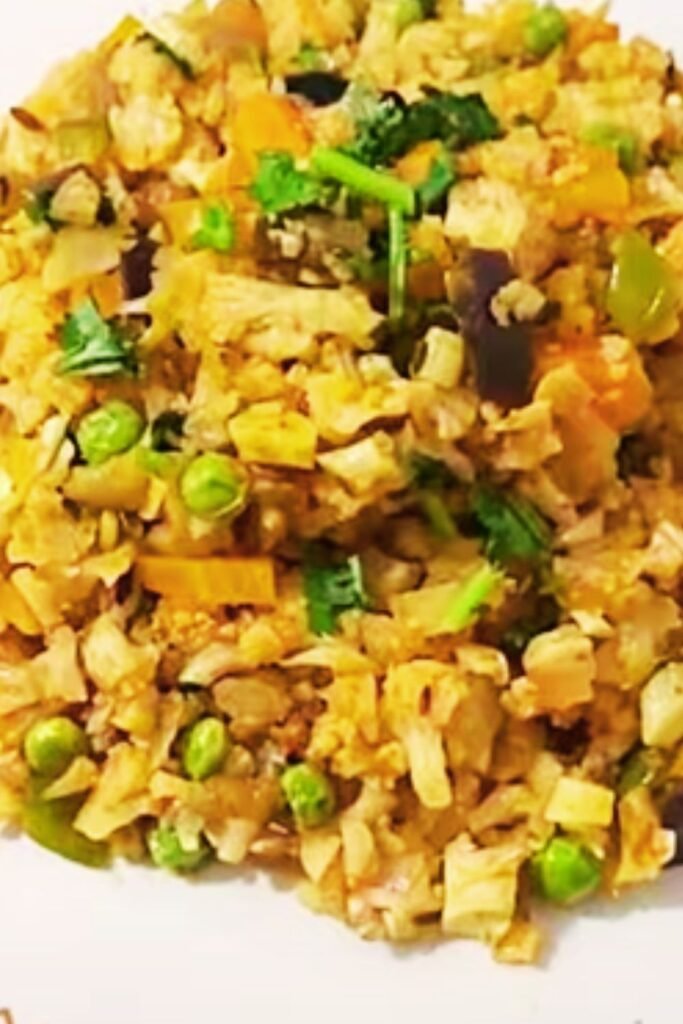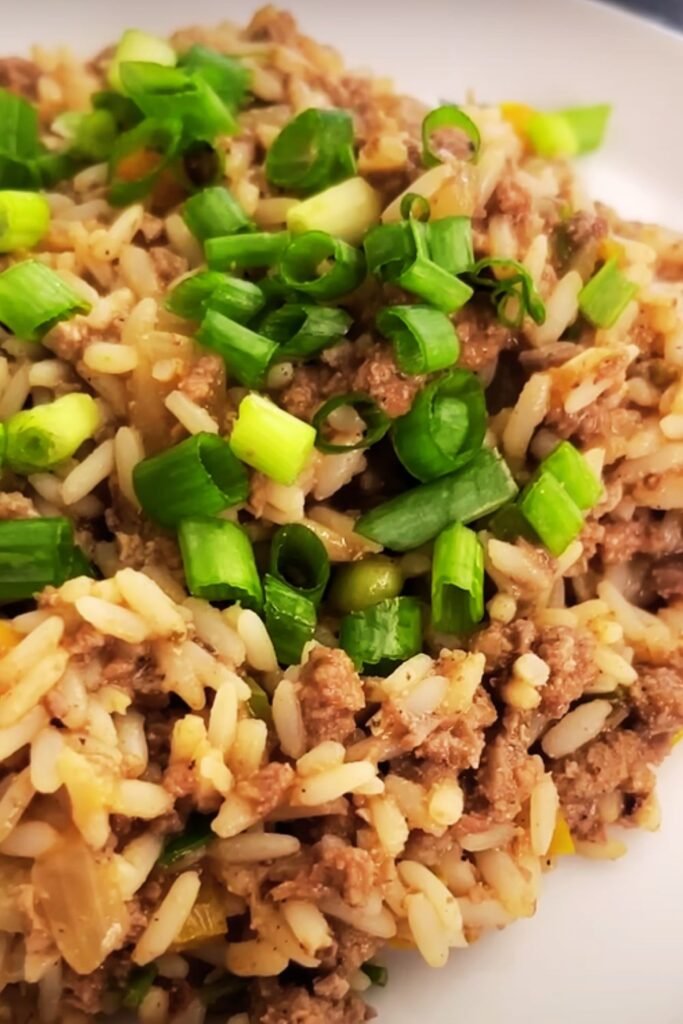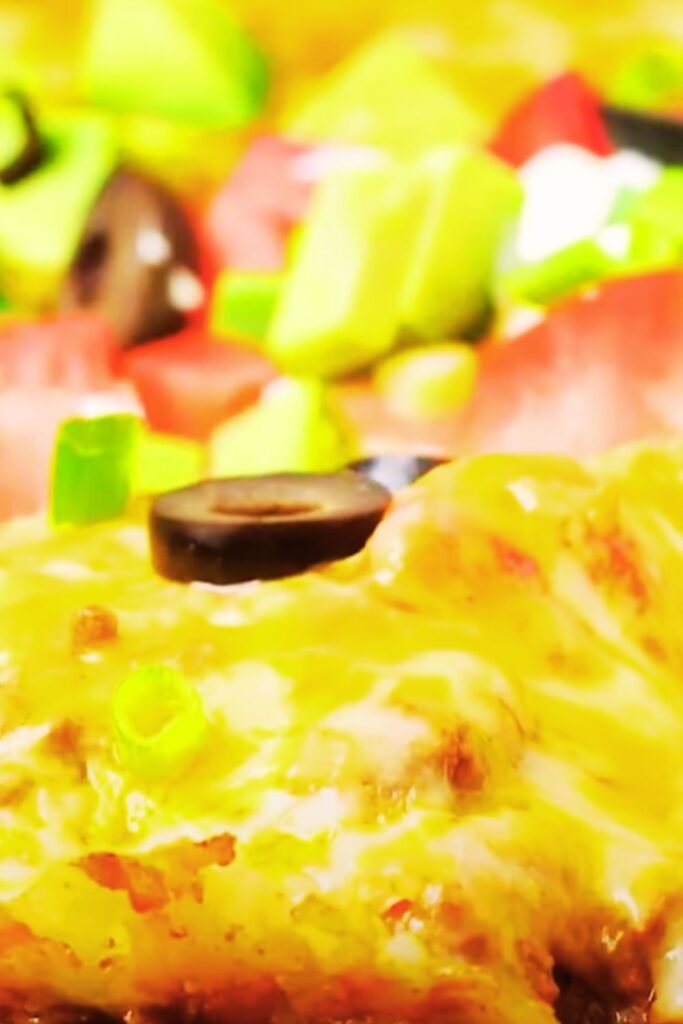I’ve been on a mission to recreate my favorite comfort foods in healthier ways, and this cauliflower dirty rice with andouille sausage has become my absolute go-to weeknight dinner. Growing up in Louisiana, dirty rice was a staple at every family gathering, but I knew I needed to find a way to enjoy those bold, smoky flavors without the heavy carbs. This paleo-friendly version delivers all the satisfaction of traditional dirty rice while keeping me energized and guilt-free.
The beauty of this dish lies in its simplicity and the way cauliflower transforms into something that feels indulgent. When I first started experimenting with cauliflower rice, I was skeptical about whether it could truly replace the hearty texture of traditional rice. But after perfecting my technique and finding the right balance of seasonings, I can honestly say this version rivals the original in flavor and satisfaction.
Understanding the Paleo Approach
Before diving into the recipe, let me explain why this dish works so well within the paleo framework:
Paleo Diet Principles : A nutritional approach based on eating foods available during the Paleolithic era, focusing on whole, unprocessed ingredients while eliminating grains, legumes, dairy, and refined sugars.
Cauliflower Rice Benefits : A low-carb alternative to traditional rice that provides fiber, vitamins C and K, and folate while maintaining a similar texture when properly prepared.
Andouille Sausage Selection : Traditional smoked sausage from Louisiana that adds authentic flavor, though paleo versions avoid fillers and artificial preservatives.
Nutritional Advantages : This version contains approximately 75% fewer carbohydrates than traditional dirty rice while providing more vegetables and maintaining protein content.
The Secret to Perfect Cauliflower Rice
My technique for achieving the perfect cauliflower rice texture has evolved through countless experiments. The key is understanding that cauliflower contains more moisture than regular rice, so proper preparation is crucial for avoiding a mushy result.
I start by selecting a large, firm cauliflower head with tightly packed florets. The freshness makes a significant difference in both texture and flavor. I remove the leaves and cut the cauliflower into manageable chunks, then pulse them in my food processor until they reach a rice-like consistency. The goal is uniform pieces about the size of cooked rice grains.
Here’s where most people go wrong: they skip the moisture removal step. I spread the cauliflower rice on a clean kitchen towel and let it sit for 10-15 minutes, then squeeze out excess moisture. This step is non-negotiable if you want rice-like texture rather than cauliflower mush.

Selecting Quality Andouille Sausage
Not all andouille sausages are created equal, especially when following paleo guidelines. I’ve learned to read labels carefully and seek out brands that use minimal ingredients and avoid common fillers.
My preferred characteristics include natural casings, no added sugars, and minimal preservatives. The smokiness should come from actual smoking rather than artificial flavoring. I typically buy from local butchers who make their own or seek out specialty brands that focus on traditional methods.
When shopping, I look for sausages with a firm texture and deep, smoky aroma. The color should be rich and even, indicating proper smoking. I avoid any sausages with visible fat separation or overly soft texture, as these often indicate poor quality or improper storage.
Essential Seasonings and Flavor Building
The magic of dirty rice lies in its complex seasoning blend. My version builds layers of flavor through careful timing and technique. I start with what I call the “holy trinity” of Cajun cooking: onions, celery, and bell peppers. These aromatics form the foundation of authentic Louisiana flavor.
My spice blend includes:
- Paprika for color and mild heat
- Cayenne pepper for authentic kick
- Garlic powder and fresh garlic for depth
- Thyme and oregano for earthy notes
- Bay leaves for subtle background flavor
- Salt and black pepper for balance
I’ve found that toasting whole spices before grinding them intensifies their flavor significantly. I often dry-toast cumin seeds and coriander seeds in a small skillet before grinding them fresh for each batch.
Step-by-Step Cooking Process
My cooking method ensures each component contributes its best flavors while maintaining proper texture throughout the dish.
Preparation Phase:
- Process cauliflower and remove moisture as described above
- Dice vegetables uniformly for even cooking
- Slice andouille sausage at an angle for maximum surface area
- Prepare all seasonings and have them ready
Cooking Sequence:
- I heat a large skillet or Dutch oven over medium-high heat
- Cook the andouille sausage first, allowing it to develop a golden crust
- Remove sausage and use the rendered fat for cooking vegetables
- Sauté the holy trinity until softened and fragrant
- Add garlic and spices, cooking until aromatic
- Incorporate cauliflower rice and cook until tender
- Return sausage to the pan and combine everything

The entire process takes about 25 minutes from start to finish, making it perfect for busy weeknights when I want something satisfying but don’t have hours to spend in the kitchen.
Nutritional Breakdown and Health Benefits
This paleo version offers impressive nutritional advantages over traditional dirty rice. I’ve calculated the approximate values based on my standard recipe serving six people.
| Nutrient | Per Serving | Traditional Rice Version | Difference |
|---|---|---|---|
| Calories | 285 | 420 | -135 calories |
| Carbohydrates | 12g | 45g | -33g |
| Protein | 18g | 15g | +3g |
| Fat | 20g | 18g | +2g |
| Fiber | 4g | 2g | +2g |
| Vitamin C | 65mg | 5mg | +60mg |
| Vitamin K | 18mcg | 2mcg | +16mcg |
| Folate | 55mcg | 15mcg | +40mcg |
The cauliflower provides significant amounts of vitamin C, which supports immune function and collagen production. The high fiber content aids digestion and helps maintain steady blood sugar levels. The reduced carbohydrate content makes this dish suitable for those following low-carb or ketogenic diets alongside paleo principles.
Texture and Flavor Variations
Over the years, I’ve developed several variations that keep this dish exciting and adaptable to different preferences or seasonal ingredients.
Spice Level Adjustments:
- Mild: Reduce cayenne to 1/4 teaspoon, add sweet paprika
- Medium: Standard recipe as written
- Hot: Add diced jalapeños and extra cayenne
- Fire: Include habanero or ghost pepper (use sparingly)
Vegetable Additions:
- Mushrooms add umami depth and meaty texture
- Zucchini provides additional moisture and nutrients
- Tomatoes contribute acidity and color
- Green onions offer fresh, sharp flavor as garnish
Protein Variations:
- Chicken thighs for milder flavor
- Shrimp for seafood lovers
- Ground turkey for lighter option
- Combination of proteins for variety
I particularly enjoy the mushroom variation during fall months, using a mix of shiitake and cremini mushrooms. The earthy flavors complement the smoky sausage beautifully.
Storage and Meal Prep Strategies
This dish excels as a meal prep option, maintaining its flavors and texture when properly stored. I often make double batches on Sundays for easy weekday meals.
Refrigerator Storage:
- Cool completely before storing
- Use airtight containers
- Consume within 4-5 days
- Reheat gently to prevent overcooking cauliflower
Freezer Storage:
- Portion into single-serving containers
- Freeze for up to 3 months
- Thaw overnight in refrigerator
- Add fresh herbs after reheating
Reheating Methods:
- Stovetop: Add splash of broth, heat gently
- Microwave: Cover and heat in 30-second intervals
- Oven: Cover with foil, reheat at 350°F
I find that adding a small amount of chicken broth during reheating helps restore moisture and prevents the cauliflower from becoming dry.

Serving Suggestions and Pairings
This versatile dish works beautifully as both a main course and a side dish. I’ve served it at dinner parties where even non-paleo guests couldn’t tell the difference from traditional dirty rice.
Main Course Pairings:
- Simple green salad with vinaigrette
- Roasted Brussels sprouts with bacon
- Sautéed collard greens with garlic
- Grilled asparagus with lemon
Side Dish Applications:
- Alongside grilled chicken or pork
- With blackened fish or shrimp
- As stuffing for bell peppers
- With roasted vegetables
Garnish Options:
- Fresh chopped parsley
- Sliced green onions
- Crispy fried shallots
- Microgreens for color
I love serving this with a simple arugula salad dressed with olive oil and lemon juice. The peppery greens provide a nice contrast to the rich, smoky flavors of the dirty rice.
Troubleshooting Common Issues
Through my experience making this dish dozens of times, I’ve encountered and solved several common problems that home cooks face.
Problem: Watery Cauliflower Rice Solution: Always remove excess moisture before cooking and avoid overcrowding the pan, which creates steam instead of proper sautéing.
Problem: Bland Flavor Solution: Season in layers, taste frequently, and don’t forget that salt enhances all other flavors. Add acid (lemon juice) to brighten the dish.
Problem: Mushy Texture Solution: Cook cauliflower rice only until tender, not soft. It should retain some bite to mimic rice texture.
Problem: Dry Sausage Solution: Don’t overcook the andouille; it’s already smoked and just needs warming through and light browning.
Advanced Techniques and Tips
For those wanting to elevate this dish further, I’ve developed several advanced techniques that add complexity and depth.
Browning Technique: I sometimes brown the cauliflower rice in batches, allowing some pieces to caramelize slightly. This adds a nutty flavor and prevents the dish from tasting too “vegetable-forward.”
Aromatics Enhancement: I save andouille drippings and use them to cook the vegetables, which intensifies the smoky flavor throughout the dish.
Herb Finishing: Adding fresh herbs at the end brightens the entire dish. I prefer parsley, but thyme or oregano work well too.
Acid Balance: A small amount of apple cider vinegar or lemon juice added at the end helps balance the rich flavors and adds brightness.
Cultural Context and Personal Connection
This recipe represents more than just a healthy substitution; it’s my way of honoring my Louisiana heritage while adapting to modern nutritional knowledge. Growing up, dirty rice was comfort food, celebration food, and everyday sustenance all rolled into one dish.
My grandmother’s original recipe called for chicken livers and gizzards, which gave the dish its “dirty” appearance and name. While I’ve simplified the ingredients for broader appeal, the essence remains the same: a hearty, flavorful one-pot meal that brings people together.
The paleo adaptation allows me to share this cultural dish with friends following various dietary restrictions, proving that healthy eating doesn’t mean sacrificing flavor or tradition.
Cost Analysis and Budget Considerations
This recipe offers excellent value compared to both restaurant versions and traditional dirty rice when you factor in the nutritional benefits.
| Ingredient | Approximate Cost | Servings | Cost per Serving |
|---|---|---|---|
| Cauliflower (2 heads) | $6.00 | 6 | $1.00 |
| Andouille Sausage (1 lb) | $8.00 | 6 | $1.33 |
| Vegetables (onion, celery, bell pepper) | $3.00 | 6 | $0.50 |
| Seasonings and Oil | $1.50 | 6 | $0.25 |
| Total | $18.50 | 6 | $3.08 |
Compared to restaurant dirty rice at $8-12 per serving, this home version provides significant savings while offering superior nutrition and ingredient quality.
Seasonal Adaptations
I’ve learned to adapt this recipe based on seasonal ingredient availability and personal preferences throughout the year.
Spring Version:
- Add fresh peas and asparagus
- Use lighter seasonings
- Incorporate fresh herbs like dill or chives
- Finish with lemon zest
Summer Version:
- Include corn kernels and tomatoes
- Add fresh basil and oregano
- Use colorful bell peppers
- Serve at room temperature as a salad
Fall Version:
- Add diced butternut squash
- Include sage and thyme
- Use darker, richer seasonings
- Incorporate toasted pecans
Winter Version:
- Add hearty vegetables like turnips
- Use warming spices like cinnamon
- Include dried herbs
- Serve extra hot with crusty bread alternative
Equipment and Tools
The right equipment makes this recipe much easier and more consistent. Here’s what I recommend:
Essential Equipment:
- Large food processor for cauliflower rice
- Heavy-bottomed skillet or Dutch oven
- Sharp chef’s knife
- Cutting board
- Clean kitchen towels
Optional but Helpful:
- Mandoline slicer for uniform vegetables
- Cast iron skillet for better browning
- Microplane grater for fresh garlic
- Kitchen scale for precise measurements
Questions and Answers
Q: Can I make this recipe ahead of time for a dinner party? I absolutely recommend making this ahead! The flavors actually improve after sitting for a few hours. I prepare it completely, then reheat gently with a splash of chicken broth to restore moisture. It holds beautifully in a slow cooker on warm setting for parties.
Q: What’s the best way to get cauliflower rice texture without a food processor? While a food processor works best, I’ve successfully used a box grater on the large holes. It takes more effort, but the results are surprisingly good. Some people use a knife to chop finely, but this requires patience and skill to get uniform pieces.
Q: Can I substitute the andouille sausage with something else? Absolutely! I’ve used Italian sausage, chicken sausage, or even crumbled bacon. Each brings different flavors, but the cooking method remains the same. For vegetarian versions, I sometimes use mushrooms or seasoned tempeh.
Q: How do I know if my andouille sausage is truly paleo-compliant? Read the ingredient list carefully. Look for sausages with minimal ingredients: pork, spices, salt, and natural casings. Avoid anything with sugar, corn syrup, soy, or artificial preservatives. Many local butchers offer paleo-friendly options.
Q: Why does my cauliflower rice turn out mushy sometimes? The most common cause is excess moisture. Always squeeze out moisture after processing, and don’t overcook. Cauliflower should be tender but still have some bite. Also, avoid overcrowding the pan, which creates steam instead of proper sautéing.
Q: Can I freeze the leftover cauliflower dirty rice? Yes, it freezes well for up to three months. I portion it into single-serving containers and thaw overnight in the refrigerator. Add a splash of broth when reheating to restore moisture and texture.
Q: What’s the best oil to use for cooking this dish? I prefer avocado oil for its high smoke point and neutral flavor, but coconut oil works well too. Some people use ghee if they’re not strictly paleo. Avoid olive oil for the high-heat cooking portions.
Q: How spicy is this recipe, and can I adjust the heat level? The recipe as written is moderately spicy. I adjust heat by varying the cayenne pepper amount and adding fresh peppers. For mild versions, I reduce cayenne to 1/4 teaspoon. For extra heat, I add diced jalapeños or habaneros.
Q: Can I add other vegetables to this recipe? Definitely! I love adding mushrooms, zucchini, or tomatoes. Just remember to adjust cooking times based on the vegetables you choose. Harder vegetables like carrots need more time, while softer ones like zucchini should be added near the end.
Q: Is this recipe suitable for meal prep? This is one of my favorite meal prep recipes! It keeps well in the refrigerator for 4-5 days and reheats beautifully. I often make double batches on Sundays for easy weekday meals. The flavors actually improve after a day or two.
This cauliflower dirty rice with andouille sausage has become more than just a recipe in my kitchen—it’s a bridge between my cultural heritage and my current health goals. Every time I make it, I’m reminded that eating well doesn’t mean sacrificing the foods and flavors that bring us comfort and joy. Whether you’re following paleo principles, looking to reduce carbs, or simply wanting to incorporate more vegetables into your diet, this dish delivers on all fronts while honoring the bold, soulful flavors of Louisiana cooking.